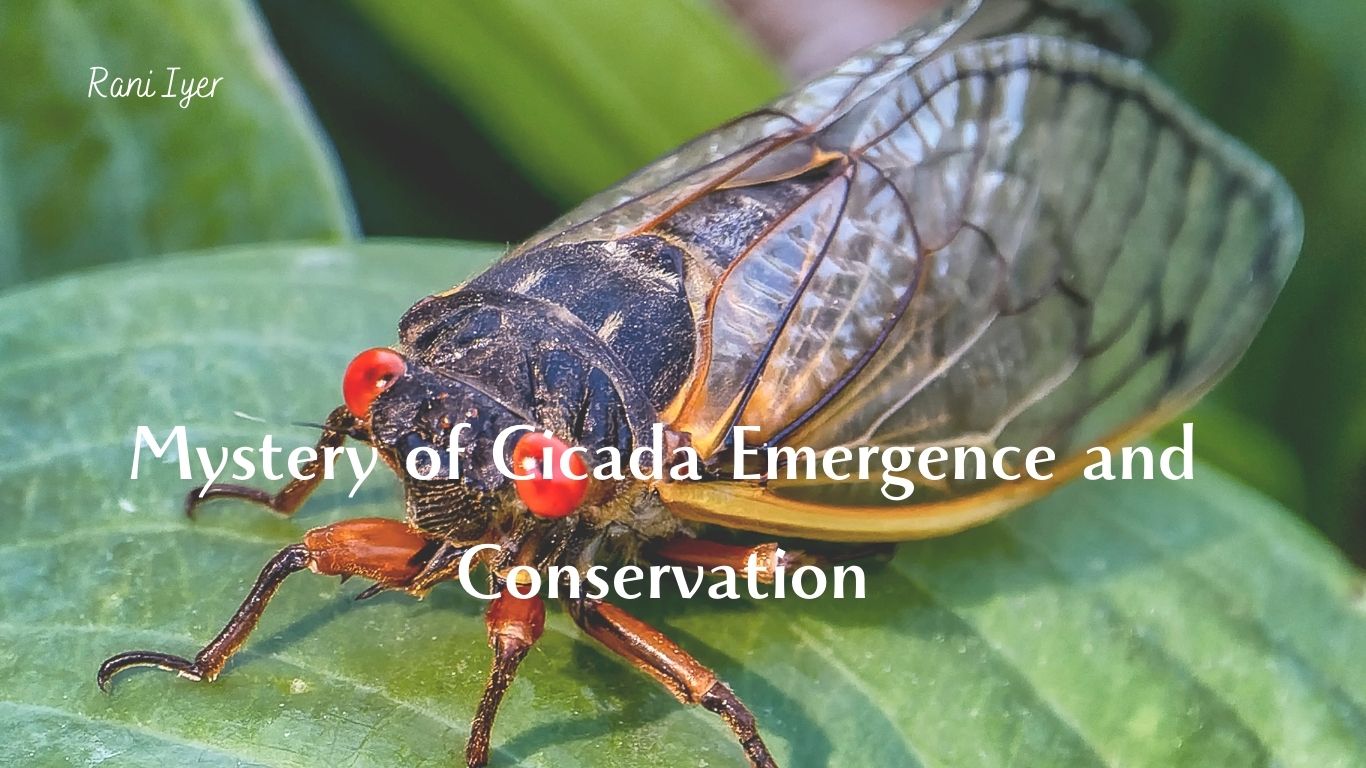In the world of insects, few phenomena are as intriguing, popular, and mesmerizing as the emergence of cicadas. These resilient creatures, often referred to as nature’s own symphony orchestra, captivate our attention with their deafening chorus and enigmatic life cycle. But what secrets lie behind their ability to withstand years underground before rising in unison?
In this article, we delve into the mysteries of cicada emergence, uncovering the unique adaptations that allow them to survive and thrive. From their extended periods spent underground to their synchronized mating rituals, we explore the fascinating stages of their life cycle and the role they play in their ecosystems.
We also shed light on the importance of conservation efforts in protecting these remarkable creatures. As human activities threaten their habitats, proactive conservation measures become vital to safeguard their populations and ensure the continuity of their captivating spectacle.
Join us in unlocking the secrets of cicada emergence and discovering how we can contribute to their conservation. Let’s explore the resilience of these buzzing insects and the wonders they bring to the natural world.
The Phenomenon of Cicada Emergence
Cicadas are known for their remarkable ability to spend the majority of their lives underground. These fascinating insects belong to the order Hemiptera and the family Cicadidae, with over 3,000 known species worldwide. They are most commonly found in temperate regions, where they can remain hidden beneath the soil for as long as 17 years.
During their time underground, cicadas feed on the sap from tree roots, using their specialized mouthparts to pierce through the plant tissue. This unique adaptation allows them to sustain themselves for extended periods, making the most of the resources available to them in their subterranean world.
But what triggers their emergence? The answer lies in environmental cues. When the temperature and soil conditions are just right, cicadas undergo a synchronized emergence as a cohort. This phenomenon is known as a “brood” and can consist of thousands or even millions of cicadas emerging within a relatively short period.
The Importance of Cicadas in the Ecosystem
Cicadas play a crucial role in their ecosystems, serving as a source of food for a variety of organisms. Their emergence acts as a buffet for predators, including birds, reptiles, mammals, and even other insects. This abundance of food can have a significant impact on the population dynamics of these predators, providing them with a temporary surplus of sustenance.
Additionally, cicadas contribute to nutrient cycling in their environments. The nymphs, during their time underground, feed on tree roots, absorbing nutrients from the soil. When they emerge as adults, they molt, leaving behind their exoskeletons. These discarded exuviae enrich the soil, returning essential nutrients to the ecosystem.
Furthermore, cicadas also aid in pollination. While they are primarily known for their buzzing calls, male cicadas produce a unique sound using specialized organs called tymbals. These calls serve as a mating signal, attracting females to their location. In the process, cicadas inadvertently transfer pollen from one plant to another, facilitating cross-pollination and contributing to plant diversity.
Factors That Influence Cicada Emergence
The timing of cicada emergence is influenced by various factors, including temperature, soil moisture, and even predation pressure. Cicadas require specific temperature thresholds to trigger their emergence. Once the soil temperature reaches a certain degree, typically around 64°F (18°C), cicadas will begin to emerge from their underground chambers.
Soil moisture is another crucial factor. Cicada nymphs need sufficient moisture in the soil to complete their development. If the soil becomes too dry, their emergence may be delayed or even prevented. Conversely, excessive rainfall can also affect their emergence, as it can flood their underground habitats and drown the nymphs.
Predation pressure can also influence cicada emergence. Some studies suggest that cicadas may emerge earlier or later in response to predation cues. For example, if predators are abundant in a particular area, cicadas may emerge earlier to increase their chances of survival by overwhelming the predators with sheer numbers.
The Mystery Behind Cicada Emergence Patterns
While cicada emergence is a well-documented phenomenon, the exact mechanisms behind their synchronized emergence patterns remain somewhat of a mystery. Researchers believe that cicadas may use a combination of environmental cues, including temperature, soil moisture, and even the vibrations caused by other cicadas, to coordinate their emergence.
One theory suggests that cicadas use “straggler control” to optimize their emergence. This means that a small percentage of cicadas within a brood may emerge earlier or later than the main emergence event. By doing so, they reduce the predation pressure on the majority of the population, ensuring the survival of the species.
Another hypothesis proposes that cicadas have evolved a “predator satiation” strategy. By emerging in massive numbers, cicadas overwhelm their predators, making it impossible for them to consume all the available individuals. This strategy increases the chances of survival for individual cicadas and ensures the continuity of their populations.
The Impact of Climate Change on Cicada Populations
Climate change poses a significant threat to cicada populations worldwide. Rising temperatures and changing precipitation patterns can disrupt the delicate balance of environmental cues that trigger their emergence. If the temperature thresholds for emergence are no longer met, cicadas may fail to emerge or emerge at the wrong time, negatively impacting their reproductive success.
Furthermore, climate change can also affect the availability of suitable habitats for cicadas. Increased urbanization and deforestation can destroy their natural habitats, limiting their ability to find suitable trees for feeding and mating. Without proper conservation efforts, these changes in habitat availability can have devastating consequences for cicada populations.
Conservation Efforts to Protect Cicadas
Given the importance of cicadas in ecosystems and the threats they face, conservation efforts are crucial to protect these remarkable insects. One key aspect of cicada conservation is the preservation and restoration of their habitats. This can be achieved through the establishment of protected areas, reforestation initiatives, and the promotion of sustainable land management practices.
Conservation organizations and researchers also play a vital role in conducting studies to better understand cicada populations and their ecological needs. By gathering data on population sizes, emergence patterns, and habitat requirements, scientists can develop effective conservation strategies to ensure the long-term survival of cicadas.
How Citizen Science Can Contribute to Cicada Research
Citizen science initiatives have proven to be valuable tools in cicada research and conservation. These initiatives involve members of the public in collecting data on cicada sightings, emergence timings, and other relevant information. By engaging and educating the public, citizen science projects can significantly contribute to our understanding of cicada populations and their conservation needs. Download online App Cicada Safari and geotag the locations you find Cicadas. This will help scientists follow the broods and emergence of broods.
Promoting Public Awareness and Education About Cicadas
Public awareness and education are essential components of cicada conservation efforts. By raising awareness about the ecological importance of cicadas and the threats they face, we can foster a greater appreciation for these remarkable insects. Educational programs, workshops, and outreach activities can help inspire individuals to take action and contribute to cicada conservation in their own communities.
Call to Action for Cicada Conservation Efforts
Cicadas are truly fascinating creatures that captivate our attention with their unique life cycle and captivating chorus. However, their habitats and populations are at risk due to habitat loss, climate change, and other human activities. It is crucial that we take proactive measures to protect these resilient insects and ensure their survival for future generations to enjoy.
By supporting conservation organizations, participating in citizen science initiatives, and promoting public awareness, we can all contribute to the preservation of cicadas and the ecosystems they inhabit. Let’s appreciate the resilience of these buzzing insects and work together to protect their habitats, so that their symphony continues to enchant us for years to come.
Remember, the next time you hear the familiar buzz of cicadas, take a moment to reflect on the mysteries they hold and the role we can play in their conservation. Together, we can ensure the resilience of the buzzing symphony that is the emergence of cicadas.
Additional Resources
Map of Cicada Emergence https://www.arcgis.com/home/item.html?id=ad0f785250854ffe9dcfcd1a027523dd
Calendar of future Cicada Emergence https://cicadas.uconn.edu/
Not since 1803 https://www.nytimes.com/2024/01/19/science/cicadas-emergence-broods.html
Online App Cicada Safari




